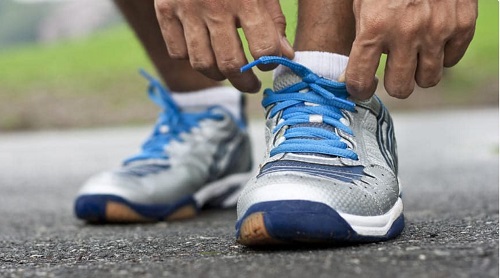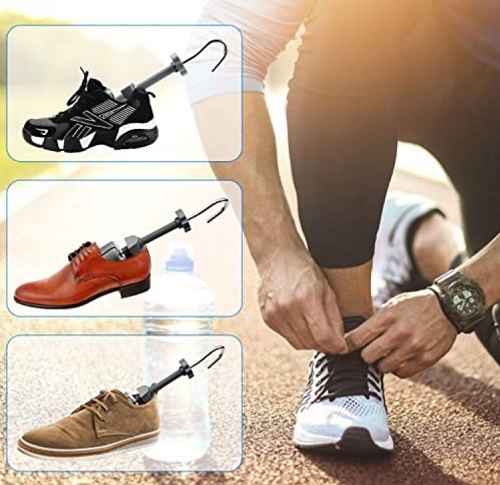Stretching running shoes can be essential for ensuring comfort during your workouts. Whether you’ve bought a pair that’s slightly too tight or your shoes have shrunk after getting wet, knowing how to stretch running shoes can save you from discomfort and the need to purchase a new pair. Many people face this issue, especially when they transition from one brand or model to another. Fortunately, there are several effective DIY methods to stretch running shoes at home, allowing you to achieve the perfect fit without damaging the material. This guide will walk you through why stretching your running shoes is necessary and how to do it using household items or professional tools.

Why Do Running Shoes Need Stretching?
Running shoes might need stretching for various reasons, primarily related to comfort and fit. New shoes often feel tight, especially around the toe box or the sides, causing discomfort or even blisters during runs. Over time, materials like leather and synthetic fabrics may expand slightly with use, but this isn’t always the case, particularly with stiffer materials. Moreover, changes in your foot shape, swelling during long runs, or even minor differences in shoe sizes can make a previously comfortable pair feel tight. Stretching your running shoes helps in customizing the fit, reducing pressure points, and preventing injuries. By understanding how to stretch running shoes effectively, you can extend their lifespan and enjoy a more comfortable running experience.
How to Stretch Running Shoes with Household Items or Professional Tools?
Using a Hairdryer and Socks
One of the easiest methods to stretch running shoes involves using a hairdryer and thick socks. First, put on the thickest pair of socks you own, then squeeze your feet into the shoes. Turn on the hairdryer and apply heat to the tight areas of the shoes for about 20-30 seconds, moving the dryer around to avoid overheating any specific spot. The heat softens the shoe material, allowing it to stretch slightly. As the shoes cool down, they should mold to the shape of your feet. This method works best on shoes made of leather or synthetic materials that respond well to heat. It’s a quick and simple way to achieve a better fit without damaging your shoes.
Freezing Water Method
Another effective DIY method for stretching running shoes is the freezing water technique. Fill a resealable plastic bag with water and seal it tightly. Place the bag inside the shoe, ensuring it fills the area that needs stretching. Next, put the shoes in the freezer overnight. As the water freezes, it expands, gently stretching the shoe material. This method is particularly useful for shoes made of non-leather materials like mesh or synthetic fabrics. In the morning, remove the shoes from the freezer and let the ice melt for a few minutes before taking the bag out. You’ll notice a slight expansion, making the shoes more comfortable.
Shoe Stretching Spray
Shoe stretching sprays are specially formulated to soften shoe material, making it easier to stretch. To use this method, spray the product generously on the areas that need stretching, such as the toe box or the sides. Once the spray is applied, wear the shoes with thick socks and walk around for a few minutes. The spray works by loosening the shoe fibers, allowing them to expand as you move. This method is effective for leather and synthetic materials and is a great option if you prefer not to use heat or freezing methods. It’s a straightforward and efficient way to improve the fit of your running shoes.
Shoe Stretchers and How They Work
Shoe stretchers are professional tools designed to stretch shoes evenly without causing damage. They come in various shapes and sizes, suitable for different shoe types. To use a shoe stretcher, insert it into the shoe and adjust it to apply pressure to the areas that need stretching. Leave the stretcher in the shoe for several hours or overnight. Some models come with adjustable knobs or extra attachments to target specific areas like the toe box or width. Shoe stretchers are ideal for those who want a precise and controlled way to stretch their running shoes, especially if they’re made of durable materials like leather.

Immediate vs. Gradual Methods to Stretch Running Shoes
When learning how to stretch running shoes, it’s important to understand the difference between immediate and gradual methods. Immediate methods, like using a hairdryer or freezing water, provide quick results and are perfect if you need to wear your shoes within a short time. These methods work by rapidly expanding the shoe material, making them more comfortable almost instantly. On the other hand, gradual methods, such as using a shoe stretcher or regularly applying shoe stretching spray, take more time but offer a more controlled and even stretch. Gradual methods are less likely to cause damage to the shoes and are better suited for delicate materials or expensive footwear. Depending on your needs, you can choose the method that best suits your situation.
Conclusion
Knowing how to stretch running shoes effectively can save you from discomfort and extend the life of your footwear. Whether you opt for quick fixes like the hairdryer method or prefer the precision of a shoe stretcher, these DIY techniques offer practical solutions to ensure your shoes fit perfectly. Remember, the key is to choose a method that matches the material of your shoes and your specific needs. By following these tips, you can enjoy a more comfortable and enjoyable running experience without the need to invest in a new pair of shoes. Take control of your shoe fit today and run with confidence.
FAQs:
1.How many times can I stretch my running shoes before they get damaged?
You can stretch your running shoes a few times without causing damage, but it’s important to avoid over-stretching. Each material has its limits, and frequent stretching can weaken the shoe’s structure over time. Stick to gentle methods and monitor the condition of your shoes.
2.Will stretching my shoes affect their performance and support?
Stretching your shoes can alter their fit, which might impact performance. However, when done correctly, the change should be minimal, and the improved comfort often outweighs any minor loss in support. It’s essential to stretch them gradually to maintain their structural integrity.
3. Can I stretch running shoes that have mesh uppers?
Yes, you can stretch running shoes with mesh uppers, but be cautious. Mesh is more delicate than leather or synthetic materials, so using gentler methods like the freezing water technique or a shoe stretcher is recommended to avoid tearing the fabric.

0 Comments